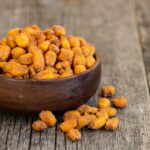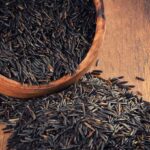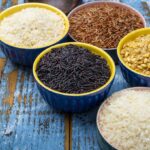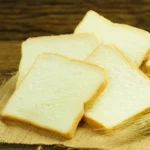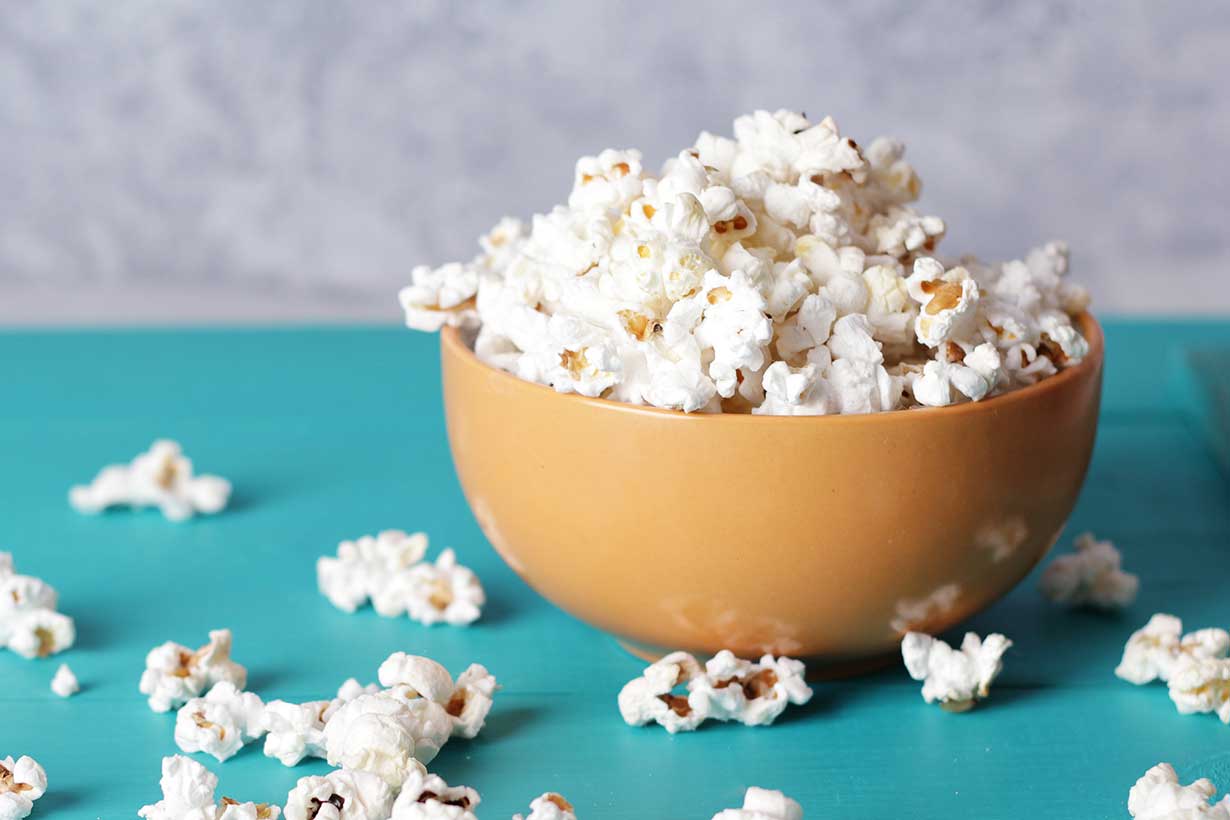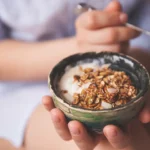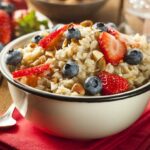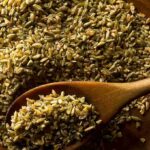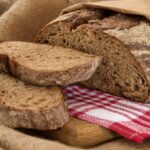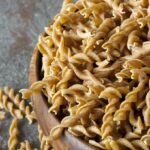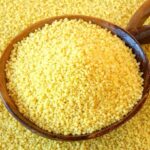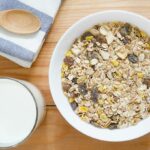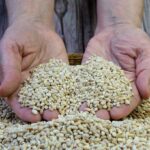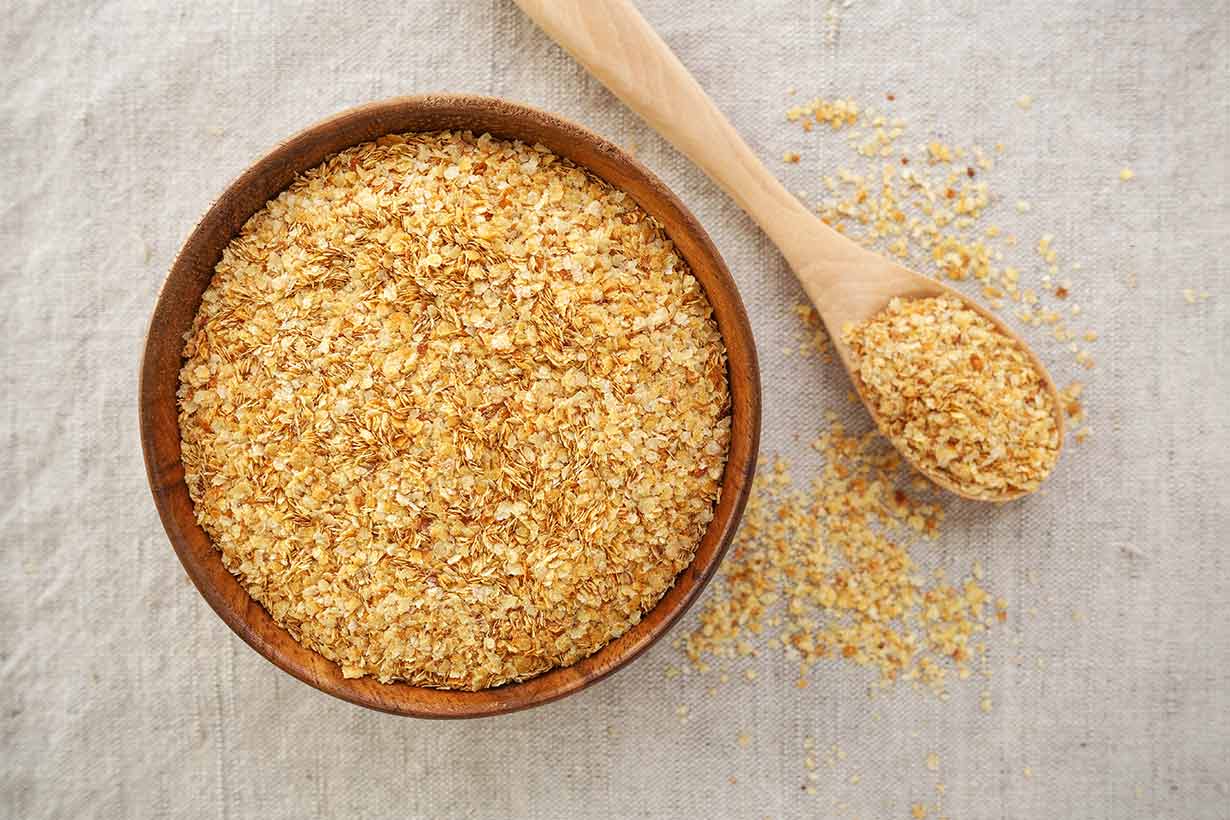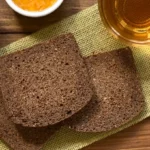We often hear health messages telling us to eat more whole grains and fewer refined grains.
But what exactly are whole grains, and what different varieties are available?
This article presents a guide to 22 types of whole grains and their nutritional values.
However, before we get into this list, let’s first examine what whole grains actually are.
Table of contents
What Are Whole Grains?
Grains are one of the most prevalent foods in the food supply, but not all of them are whole grains.
Technically, whole grains are any cereal food that still contains the entire seed of the plant. These seeds come from various species of grasses, otherwise known as cereals.
The seed of a cereal grain consists of three separate parts: the bran, the germ, and the endosperm. By regulatory definitions, a food product can be called a “whole grain” if it contains these three parts of the plant in the same amounts as the whole plant contains (1, 2).
As a result, if a whole grain has been processed into flour, it can still keep the ‘whole grain’ label providing it contains the bran, germ, and endosperm in their original ratios.
Some of the most well-known whole grains include wholewheat, oats, rye, brown rice, barley, and corn.
What Are Psuedocereals?
There are also certain plant foods that we refer to as “pseudocereals.”
These so-called pseudocereals are still whole grains, and their seeds contain the bran, germ, and endosperm.
However, they are not from species of grass as true cereals are. Some examples of pseudocereals include amaranth, buckwheat, and quinoa.
What Are Refined Grains?
It is common to find various kinds of refined grains available in the food supply. These food products have undergone significant processing and do not contain all three parts of the seeds.
Unlike whole grains, refined grains contain only the endosperm and contain no bran or germ. For this reason, they are higher in starchy carbohydrates and contain much lower concentrations of fiber, vitamins, and minerals (3).
Meta-analyses of large observational trials have demonstrated that replacing refined grains with whole grains improves numerous health markers. These markers include blood glucose levels, triglycerides, lipid/cholesterol levels, and markers of inflammation (4, 5, 6).
Refined grains include products such as white bread, white flour, and white rice.
Types of Whole Grains
Now that we have established what whole grains are let’s examine the most common varieties of whole grains.
1) Amaranth
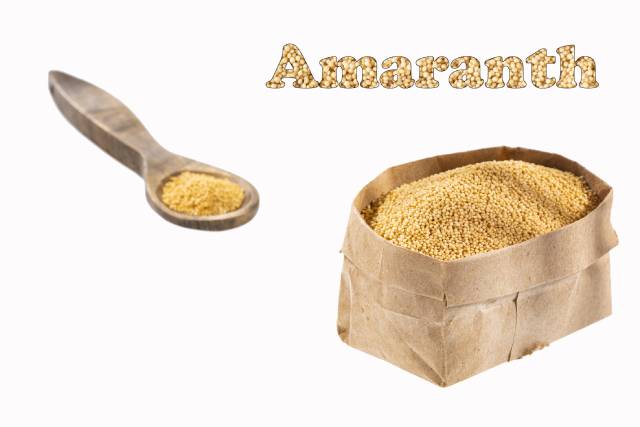
- Scientific name: Amaranthus caudatus L, Amaranthus cruentus L, Amaranthus hypochondriacus L
- Type: Pseudocereal
- Uses: Flour, mixed with rice, porridge, soups, stews, and thickening sauces
- Major micronutrients: Manganese, magnesium, phosphorus, iron, vitamin B6
Amaranth is a pseudocereal whole grain, and it has long been part of human diets. On this note, amaranth was a valued grain amongst Aztec cuisine (7).
There are many different species of amaranth that grow around the world, but the scientific name of three of the most common varieties is listed above.
Amaranth is also naturally gluten-free.
Among its many uses, amaranth can be processed into flour or used alongside other grains, as porridge, or mixed into soups and stews.
Cooked amaranth has the following basic nutritional profile per cup (246g) serving (8):
- Calories: 251 kcal
- Carbohydrate: 46.0 g
- Fiber: 5.17 g
- Fat: 3.89 g
- Protein: 9.35 g
2) Barley
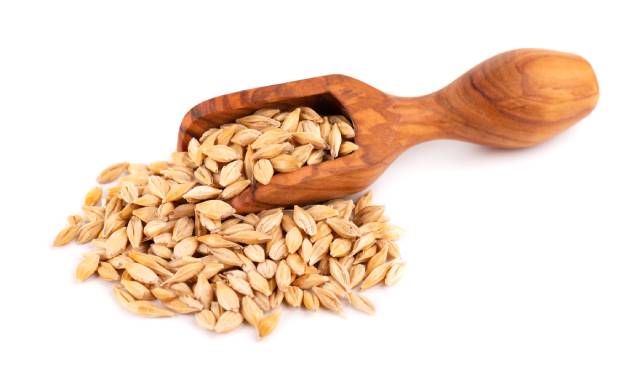
- Scientific name: Hordeum vulgare
- Type: Cereal
- Uses: Beer, bread, flour, malt drinks, porridge, soups and stews, tea
- Major micronutrients: Manganese, selenium, niacin (B3), phosphorus, magnesium
Barley is one of the most popular grains, and it is a true cereal grain that also contains gluten.
This cereal grain has a mild and nutty flavor and it features in everything from beer and tea to bread and desserts.
Barley grows around the world in temperate climates. According to scientific research, barley was first domesticated around the year 8000 BC (9).
Here is the basic nutritional profile for cooked pearled barley per cup (157g) serving (10):
- Calories: 193 kcal
- Carbohydrate: 44.3 g
- Fiber: 5.97 g
- Sugars: 0.44 g
- Fat: 0.69 g
- Protein: 3.55 g
See this complete guide to barley and its nutritional properties
3) Brown Rice
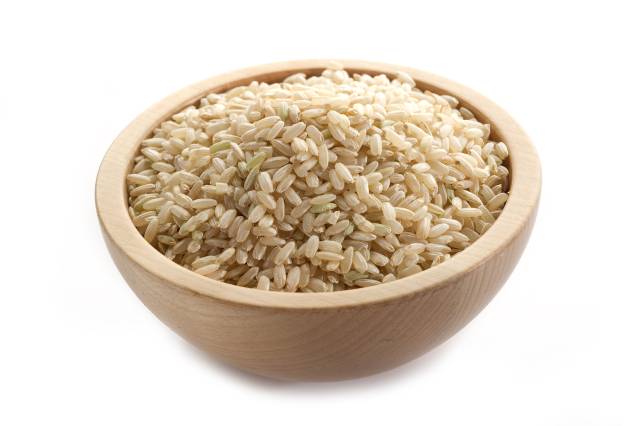
- Scientific name: Oryza sativa
- Type: Cereal
- Uses: Baked goods, cooked rice, flour, rice-based dishes
- Major micronutrients: Manganese, niacin (B3), thiamin (B1), phosphorus, magnesium
The major difference between brown rice and refined (white) rice is that it still has the bran and germ layer present.
Compared to white rice, brown rice has an advantage nutritionally and it provides higher amounts of fiber and micronutrients.
However, white rice is generally favored to brown around the world for culinary purposes. This is partly due to its milder flavor and softer texture, which lend desired characteristics to dishes like risotto, stir-fries, and sushi rice.
Brown rice is naturally gluten-free.
Per cup (195g) of cooked brown rice, it offers the following basic nutrition profile (11):
- Calories: 238 kcal
- Carbohydrate: 49.6 g
- Fiber: 3.12 g
- Sugars: 0.47 g
- Fat: 1.87 g
- Protein: 5.32 g
For more on rice, see this guide to the different varieties:
9 Types of Rice and Their Nutritional Profiles
4) Buckwheat
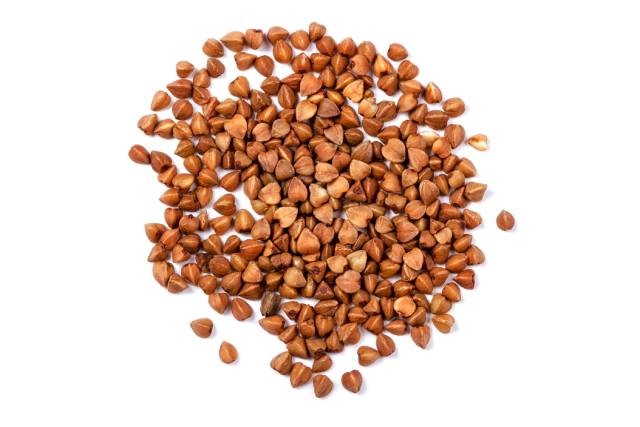
- Scientific name: Fagopyrum esculentum
- Type: Pseudocereal
- Uses: Bread, flour, noodles, porridge, rice alternative, soups and stews
- Major micronutrients: Manganese, magnesium, phosphorus, niacin (B3), vitamin B6
Buckwheat is a gluten-free pseudocereal grain that has grown increasingly popular over the past decade.
In this regard, numerous buckwheat products have come to the market, such as buckwheat flour, pasta, and noodles.
Among these foods, buckwheat noodles have been particularly popular in Asia for centuries. In Japan, these noodles are called ‘soba’ and have been popular since the early 17th century (12).
Cooked buckwheat groats provide the following nutritional profile per cup (168g) serving (13):
- Calories: 155 kcal
- Carbohydrate: 33.5 g
- Fiber: 4.54 g
- Sugars: 1.51 g
- Fat: 1.04 g
- Protein: 5.68 g
5) Bulgur
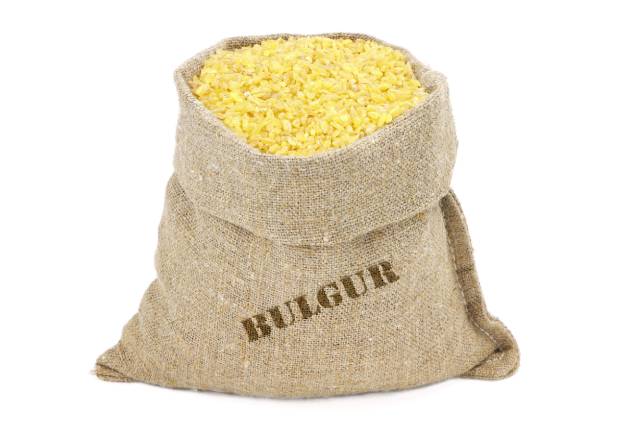
- Scientific name: Triticum durum (often made from)
- Type: Cereal
- Uses: Bread, flour, porridge, rice replacement, soups and stews
- Major micronutrients: Manganese, magnesium, phosphorus, niacin (B3), copper
Bulgur wheat (known as bulgur) is one of the more nutrient-dense grains, and it offers higher fiber and nutrient concentrations than rice.
Technically, bulgur is a form of wheat. This grain food is produced by the partial boiling of different wheat groats, mainly durum wheat (14).
Despite this, bulgur can be used in the same way or as a direct replacement for rice.
As with many other cereal grains, bulgur has a mildly nutty flavor, and it has played a big role in traditional Middle Eastern cuisine (14).
As a type of wheat, bulgur contains gluten, and it may be eaten either raw or cooked.
Cooked bulgur offers the following basic nutritional profile per cup (182g) serving (15):
- Calories: 151 kcal
- Carbohydrate: 33.8 g
- Fiber: 8.19 g
- Sugars: 0.182 g
- Fat: 0.437 g
- Protein: 5.61 g
6) Einkorn
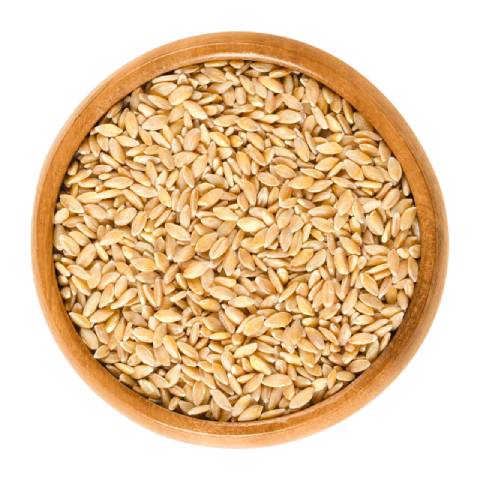
- Scientific name: Triticum monococcum
- Type: Cereal
- Uses: Baking, bread, cakes, flour
- Major micronutrients: Manganese, selenium, magnesium, thiamin (B1), phosphorus
Einkorn is an ancient form of wheat that offers some nutritional advantages over regular forms of wheat.
Some earlier research questioned whether einkorn might be a “safer” form of wheat suitable for celiacs (16).
However, based on more recent research, it appears that einkorn may just be a “less bad” source of gluten than regular wheat. However, it is still not suitable for individuals with celiac disease (17).
Einkorn wheat is typically sold as flour, and it can be used in the same way as regular wheat flour. It is also commonly known as ‘littlespelt’
Einkorn may sometimes be referred to as ‘farro.’ While farro generally refers to emmer in the United States, it is originally an Italian term to describe three ancient wheat species (einkorn, emmer, and spelt.)
Per quarter cup (48g) serving of einkorn flour, here is the basic nutritional profile (18):
- Calories: 160 kcal
- Carbohydrate: 31.0 g
- Fiber: 2.98 g
- Sugars: 0.99 g
- Fat: 0.99 g
- Protein: 8.0 g
7) Emmer
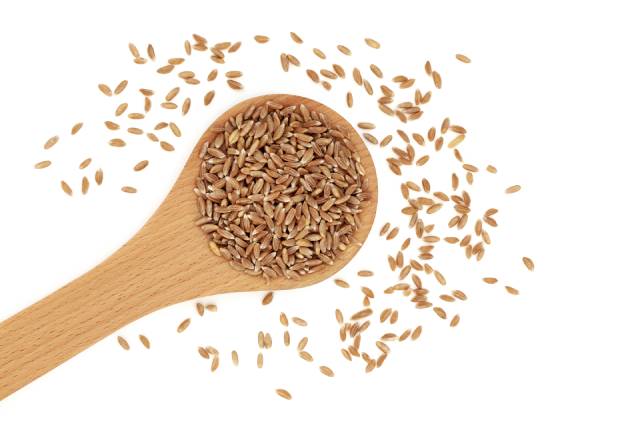
- Scientific name: Triticum turgidum
- Type: Cereal
- Uses: Baking, bread, cakes, flour
- Major micronutrients: Manganese, selenium, magnesium, thiamin (B1), phosphorus
Following einkorn, emmer is another of the three ancient wheat species that come under the ‘farro’ banner, in the word’s original Italian sense.
Emmer was one of the world’s most popular crops at one time, and it enjoyed particular popularity in Ancient Egypt, where it was a daily staple (19).
Compared to most domesticated modern-day wheat, emmer is higher in fiber and essential nutrients (20).
However, emmer is difficult to find and only grows in certain mountainous regions (19).
Here is the base nutritional data for a quarter cup (47g) serving of emmer flour (21):
- Calories: 170 kcal
- Carbohydrate: 34.0 g
- Fiber: 4.98 g
- Fat: 1.0 g
- Protein: 6.0 g
8) Fonio
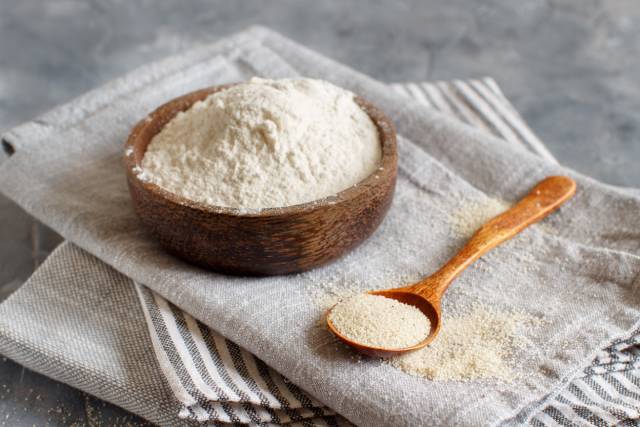
- Scientific name: Digitaria exilis, Digitaria iburua
- Type: Cereal
- Uses: Baking, beer, bread, couscous, flour, porridge, rice alternative
- Major micronutrients: Iron, magnesium, riboflavin, thiamin, zinc
Fonio is a type of true cereal grain that mainly grows in West Africa, where it has the nickname of ‘hungry rice’ (22).
It is used in a similar way to rice, flour, and oats and can be used for making porridge, beer, bread, and more.
Fonio offers the following basic nutritional values per 100g serving (23):
- Calories: 335 kcal
- Carbohydrate: 66.1 g
- Fiber: 18.2 g
- Fat: 4.2 g
- Protein: 8.5 g
This complete guide to fonio provides more information on its nutritional benefits.
9) Freekeh
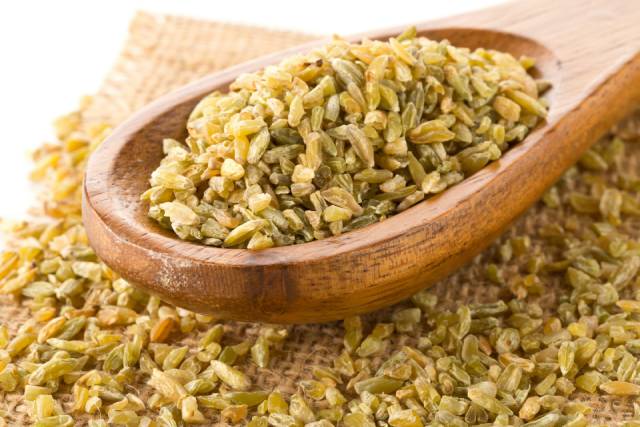
- Scientific name: Triticum turgidum var. durum
- Type: Cereal
- Uses: Bread, flour, mixed dishes, served alone, soups and stews,
- Major micronutrients: Manganese, iron, phosphorus, niacin (B3), folate
Freekeh is a whole-grain product made by prematurely picking green wheat before it has matured. These grains are then sun-dried and roasted, giving freekeh a unique flavor compared to other grain products despite the same earthy notes.
Freekeh is popular in Middle Eastern and North African cuisine, and it has a number of different uses.
Among these uses, freekeh can be served alone, mixed with meat, vegetables, and spices, or in soups and stews. As an example, here is a recipe for freekeh with chicken.
A quarter-cup (40-gram) serving of freekeh provides the following nutritional values (24):
- Calories: 130 kcal
- Carbohydrate: 28.0 g
- Fiber: 4.0 g
- Sugars: 0 g
- Fat: 1.0 g
- Protein: 6.0 g
See this guide to the nutritional benefits of freekeh for more information:
5 Nutritional Benefits of Freekeh
10) Kaniwa
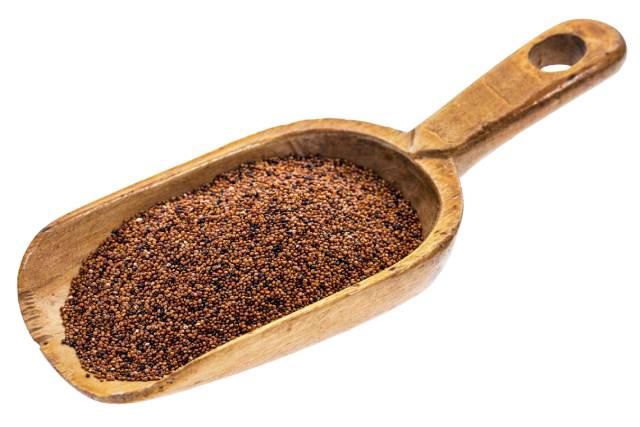
- Scientific name: Chenopodium pallidicaule
- Type: Pseudocereal
- Uses: Bread, flour, porridge, soups, stews
- Major micronutrients: Thiamin (B1), phosphorus, iron, manganese, niacin (B3)
Kaniwa is one of the lesser-known types of whole grains, and this pseudocereal grain plays a prominent role in Andean cuisine (25).
Since kaniwa is not a true grass species of cereal grain, it is gluten-free and rich in fiber and protein.
Among its other uses, kaniwa can be used as a wheat flour alternative for baking purposes. It is also often used to make soups and stews.
Based on the ESHA nutrition database, accessed through Cronometer, a quarter-cup (45-gram) serving of kaniwa provides:
- Calories: 160 kcal
- Carbohydrate: 30.0 g
- Fiber: 3.0 g
- Sugars: 0.0 g
- Fat: 1.0 g
- Protein: 7.0 g
11) Khorasan (Kamut)
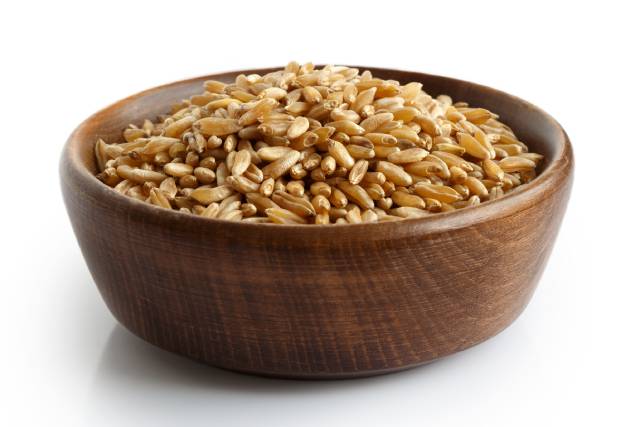
- Scientific name: Triticum turanicum
- Type: Cereal
- Uses: Baking, bread, flour, soups, stews, thickening sauces
- Major micronutrients: Thiamin (B1), phosphorus, iron, manganese, niacin (B3)
Khorasan is also known by its commercial name of ‘Kamut,’ and it is another ancient wheat grain form.
Compared to most modern commercial wheat varieties, khorasan has greater nutrient density, including a greater amount of protein, vitamins, and minerals (26).
Although the nutritional values are different, khorasan can be used in the same way as regular whole grain wheat.
A cup (172g) serving of cooked khorasan provides (27):
- Calories: 227 kcal
- Carbohydrate: 47.5 g
- Fiber: 7.4 g
- Sugars: 5.28 g
- Fat: 1.43 g
- Protein: 9.8 g
12) Maize (Corn)
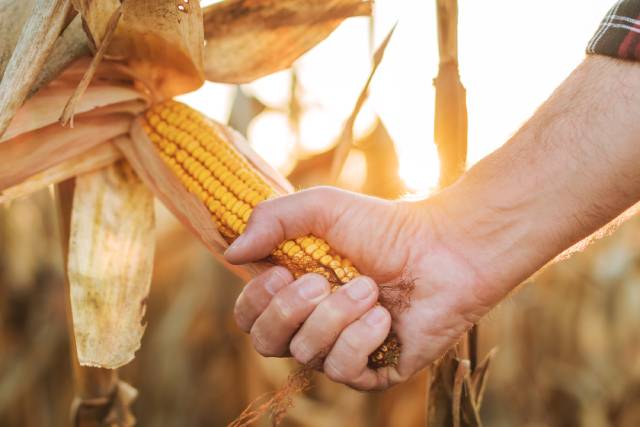
- Scientific name: Zea mays
- Type: Cereal
- Uses: Baking, bread, corn on the cob, corn oil, corn syrup, flour, sweet corn,
- Major micronutrients: Folate, phosphorus, manganese, magnesium, potassium
Maize is the most popular grain globally, and it is also known as corn, which may be more familiar to some people.
Maize is a true cereal grain, and it is also gluten-free (27).
According to recent genetic and microbotanical analyses, maize was likely first domesticated over 10,000 years ago in Mexico (28).
Maize is the most prevalent grain crop throughout the Americas. In 2019, farmers in the United States alone planted 91.7 million acres of maize (29).
It can be ground into flour and used in the same ways as wheat flour. Corn on the cob is also a popular form of maize.
A large ear of cooked corn (118g) offers the following basic nutritional values (30):
- Calories: 113 kcal
- Carbohydrate: 24.8 g
- Fiber: 2.83 g
- Sugars: 3.23 g
- Fat: 1.77 g
- Protein: 4.0 g
There are actually several different plants in the maize family, and each one produces quite different foods.
For instance, the nutritional properties of popcorn are quite different from sweetcorn.
There is also a wide range of corn-based processed foods, such as corn nuts. See here for more information on corn nuts:
What Are Corn Nuts? A Nutritional Guide
13) Millet
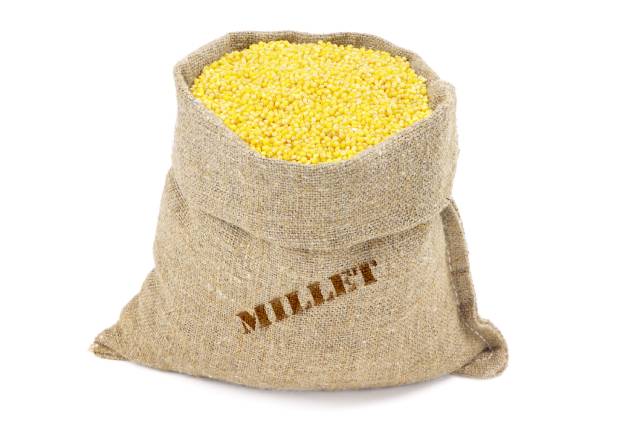
- Scientific name: Zea mays
- Type: Cereal
- Uses: Baking, bread, corn on the cob, corn oil, corn syrup, flour, sweet corn,
- Major micronutrients: Manganese, copper, magnesium, thiamin (B1), niacin (B3)
Millet is a true cereal grain and production centers around parts of Asia and Africa with semi-arid climates. In these regions of the world, millet is a major food source for the local people (31).
This grain is another staple crop that has long been part of human diets, with evidence of first domestication going back to 2500 BC (32).
Millet is gluten-free, and people use it for making bread, flour-based snacks, alcoholic beverages, and more (33).
Per cup (174g) serving, cooked millet provides (34):
- Calories: 207 kcal
- Carbohydrate: 41.2 g
- Fiber: 2.26 g
- Sugars: 0.23 g
- Fat: 1.74 g
- Protein: 6.11 g
14) Oats
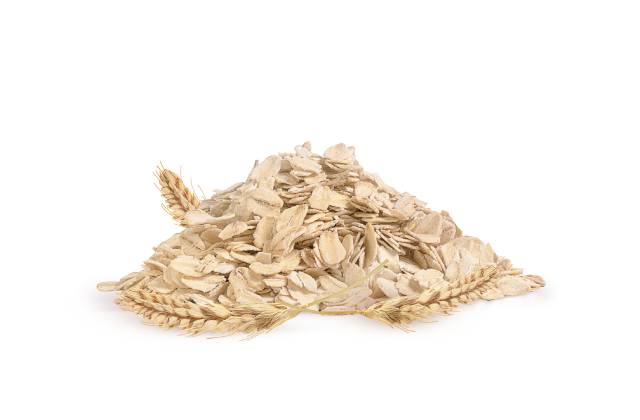
- Scientific name: Avena sativa
- Type: Cereal
- Uses: Baking, beer, bread, flour, porridge
- Major micronutrients: Manganese, selenium, phosphorus, magnesium, thiamin (B1),
Oats are one of the most popular grains in the Western world, and they are most often used to make the breakfast option of porridge.
They are also the primary ingredient in the popular breakfast dish muesli.
There are several different forms that oats may come in, and these may include: groats (the whole oat kernel), steel-cut oats (cut kernels), and rolled oats (steamed and flattened groats).
Although they have different textures, appearances, and cooking times, these three forms are all considered to be whole grains.
Per cup (81g) serving, oats provide (35):
- Calories: 307 kcal
- Carbohydrate: 54.8 g
- Fiber: 8.18 g
- Sugars: 0.8 g
- Fat: 5.28 g
- Protein: 10.7 g
For more information on the nutritional properties and health effects of oats, please refer to the following article:
Is Oat Porridge (Oatmeal) a Healthy Breakfast Choice?
15) Quinoa
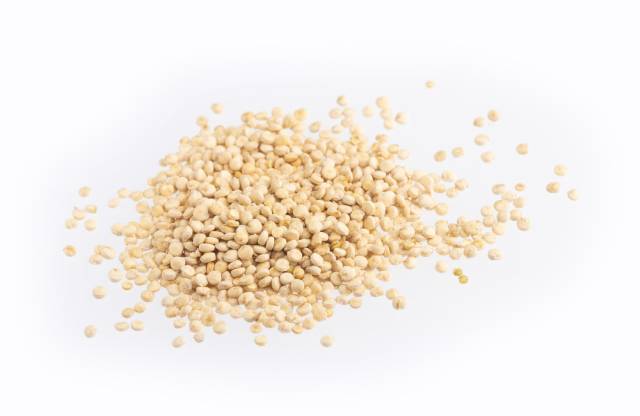
- Scientific name: Chenopodium quinoa
- Type: Pseudocereal
- Uses: Flour, salads, soups, stews
- Major micronutrients: Manganese, magnesium, phosphorus, folate, copper
Quinoa is a pseudocereal grain grown worldwide and first cultivated by the Inca people prior to 3000 BC (36).
This whole grain has increased in popularity in recent years, with global production vastly increasing.
In 1980, only eight countries grew quinoa, but by 2015, nearly 100 countries were producing it (37).
Quinoa grains are small and can be used in a variety of ways for culinary purposes.
The grain is often used in the same way as couscous and shares a similar appearance. Quinoa salads featuring a variety of fresh vegetables are popular.
Per cup (185g) of cooked quinoa, this grain provides (38):
- Calories: 222 kcal
- Carbohydrate: 39.4 g
- Fiber: 5.18 g
- Sugars: 1.61 g
- Fat: 3.55 g
- Protein: 8.14 g
16) Rye
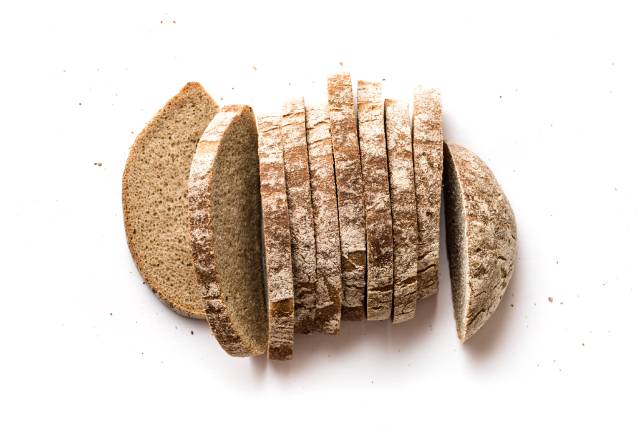
- Scientific name: Secale cereale
- Type: Cereal
- Uses: Baking, beer, bread, flour, mixed dishes, served alone as cooked rye berries
- Major micronutrients: Manganese, phosphorus, magnesium, niacin (B3), thiamin (B1)
Rye is a true cereal grain, and it has been cultivated for approximately 4000 years, with the first domestication occurring around 2000 BC (39).
In addition to being closely related to wheat, rye is used in a similar way.
Beers and bread products made with rye are very popular, and this whole grain may also be cooked and served alone.
You can find a complete guide to rye bread here:
Rye Bread: An Exploration of Its Nutritional Values and Benefits
Rye grains are darker in color than wheat, and bread made with rye has a darker shade of color.
Rye contains gluten proteins (40).
Per one-third cup serving, rye grains have the following nutritional values (41):
- Calories: 190 kcal
- Carbohydrate: 42.7 g
- Fiber: 8.5 g
- Sugars: 0.55 g
- Fat: 0.92 g
- Protein: 5.8 g
17) Sorghum
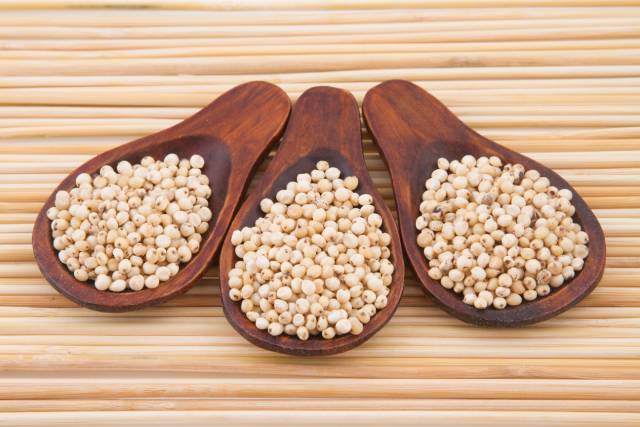
- Scientific name: Sorghum bicolor
- Type: Cereal
- Uses: Baking, beer, bread, flour, porridge
- Major micronutrients: Manganese, magnesium, phosphorus, vitamin B6, thiamin (B1)
Sorghum is a mild-tasting gluten-free cereal grown worldwide but mainly produced in warm areas of Africa and Asia. According to the Food and Agriculture Organization (FAO) of the United Nations, developing countries represent 90% of the world’s sorghum plantations (42).
In the Western world, sorghum does not play a prevalent role in typical diets. However, it is popular as a gluten-free alternative due to its resemblance to wheat in taste.
Like other wheat-like grains, sorghum may be used as flour, for baking purposes, or even for making beer.
Per one-third cup serving, sorghum grains offer the following nutritional values (43):
- Calories: 211 kcal
- Carbohydrate: 46.0 g
- Fiber: 4.3 g
- Sugars: 1.62 g
- Fat: 2.21 g
- Protein: 6.8 g
18) Spelt
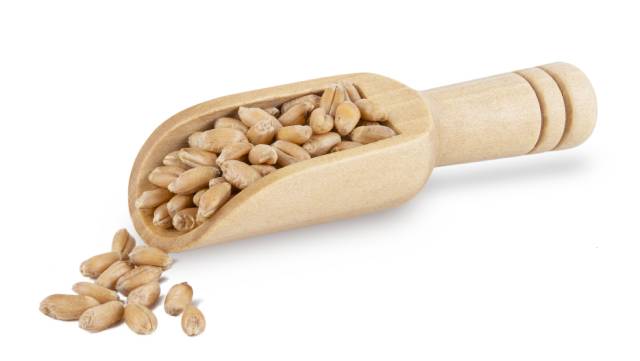
- Scientific name: Triticum spelta
- Type: Cereal
- Uses: Baking, beer, bread, flour, mixed meals, spelt salads
- Major micronutrients: Manganese, phosphorus, magnesium, niacin (B3), copper
Spelt is another of the ancient wheat grain species, and it is a true cereal grain.
A recent retail survey in the United Kingdom and Germany demonstrated that spelt appears to be more nutritious than regular wheat. In this regard, spelt contained significantly higher amounts of copper, magnesium, manganese, phosphorus, potassium, sulfur, zinc, and phytonutrients (44).
As a wheat species, spelt contains gluten and is thus not suitable for those with celiac disease or gluten sensitivities (45).
It is possible to use spelt four in the same ways as regular wheat flour. Whole spelt grains may also be cooked as part of a dish and mixed with other foods.
Per cup serving, cooked spelt offers the following nutritional values (46):
- Calories: 246 kcal
- Carbohydrate: 51.3 g
- Fiber: 7.57 g
- Fat: 1.65 g
- Protein: 10.7 g
19) Teff
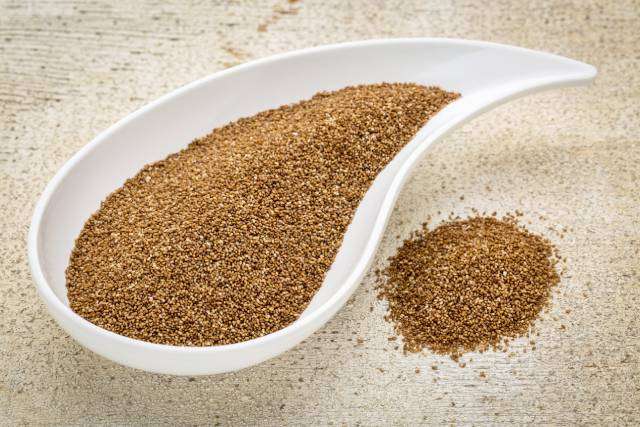
- Scientific name: Eragrostis tef
- Type: Cereal
- Uses: Baking, beer, bread, flour, mixed dishes, porridge, soups, stews
- Major micronutrients: Manganese, magnesium, phosphorus, iron, copper
Teff is another type of true cereal grain that often gets called an “ancient grain,” and it is gluten-free (47).
This “ancient” tag is fair, as records suggest that the first domestication of teff took place as far back as 3359 BC (48).
Teff is a staple food in certain regions of Africa, particularly Ethiopia and Eritrea (49).
Teff is extremely small in size and has an appearance that resembles poppy seeds. It can also have different colors, including white, red, and brown (49).
Among its many uses, teff can be used for making porridge. It also works well in various dishes mixed with meat/vegetables/other grains.
Per cup serving, cooked teff has the following basic nutritional profile (50):
- Calories: 255 kcal
- Carbohydrate: 50.0 g
- Fiber: 7.06 g
- Fat: 1.64 g
- Protein: 9.75 g
20) Triticale
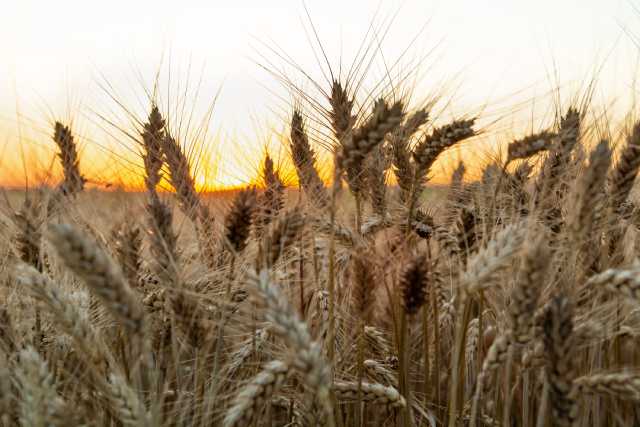
- Scientific name: Triticale hexaploide Lart.
- Type: Cereal
- Uses: Baking, bread, flour, thickening sauces
- Major micronutrients: Manganese, phosphorus, magnesium, thiamin (B1), zinc
Triticale is a hybrid grain that was first created in 1875 but has begun delivering increasingly high yields over recent decades (51).
As a cross between wheat and rye, triticale has a taste and nutritional profile that resembles a middle ground between the two.
The taste is not as mild as wheat yet does not have the same rich, sour-like flavor that rye can possess.
Although triticale is often used for animal feed, it may be used similar to wheat and rye for baking purposes.
Per one-third cup serving, triticale offers the following nutritional values (52):
- Calories: 215 kcal
- Carbohydrate: 46.2 g
- Fat: 1.3 g
- Protein: 8.35 g
21) Whole wheat
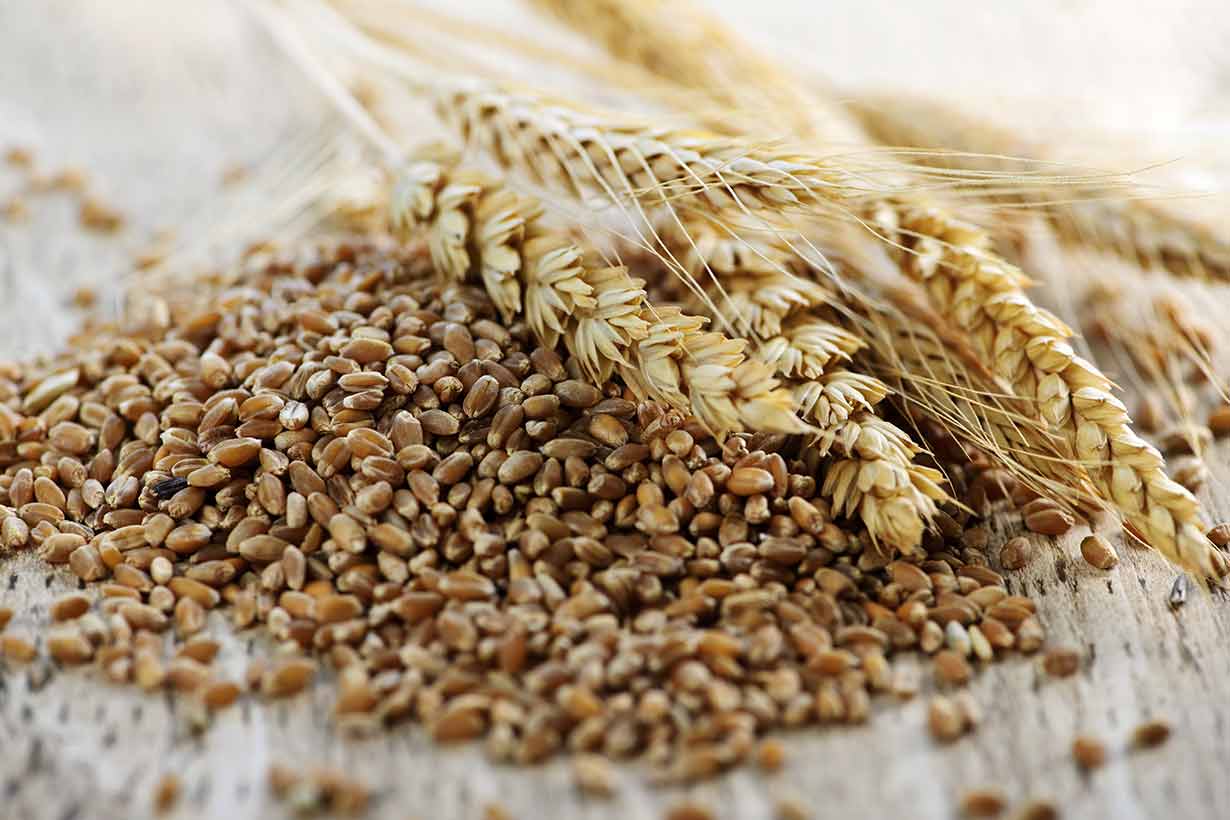
- Scientific name: Triticum aestivum
- Type: Cereal
- Uses: Baking, beer, bread, flour, pasta, thickening sauces
- Major micronutrients: Manganese, selenium, phosphorus, thiamin (B1), magnesium
There are many different wheat strains, but today’s most popular form in the food environment is known simply as ‘common wheat.’
Triticum aestivum is the strain that we know as common whole wheat, and it is the second most widely grown cereal crop in the world behind maize (53).
Common wheat is a true cereal grain, and it is used to produce a wide range of common foods and drinks. These include baked goods, beer, bread, couscous, noodles, pasta, and more.
Whole wheat pasta is one of the easiest ways to consume whole grains.
Per half-cup (60g) serving of whole wheat flour, the basic nutritional profile is as follows (54):
- Calories: 204 kcal
- Carbohydrate: 43.2 g
- Fiber: 6.4 g
- Sugars: 0.25
- Fat: 1.5 g
- Protein: 7.95 g
Arguably the most nutritious wheat product is wheat germ. See this nutritional guide to wheat germ for more information.
22) Wild Rice
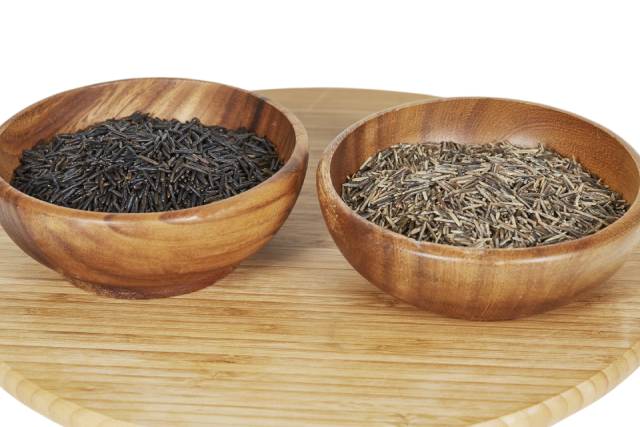
- Scientific name: Zizania
- Type: Cereal
- Uses: Baked goods, cooked rice, flour, mixed rice dishes,
- Major micronutrients: Manganese, zinc, phosphorus, magnesium, vitamin B6
Wild rice is another type of whole grain rice that enjoys popularity around the world.
While nutritionally similar (ish) to brown rice, it has a slightly higher protein and fiber content. It can also be used in various ways, whether served alone, used as flour, or as an ingredient in mixed dishes.
A cup of cooked rice provides the following nutritional values (55):
- Calories: 166 kcal
- Carbohydrate: 35.0 g
- Fiber: 2.95 g
- Sugars: 1.2 g
- Fat: 0.56 g
- Protein: 6.54 g
See this complete nutritional guide to wild rice for more information:
Whole Grain-Based Breakfast Cereals
It is also worth noting that breakfast cereals are a common source of whole grains.
However, you have to choose a breakfast cereal option carefully, as many are made with refined grains and sometimes significant amounts of added sugar.
For more information on the best choices, please refer to the following article:
10 of the Healthiest Breakfast Cereal Choices
Notes
Unless otherwise noted, all nutritional data used within this article was sourced from the USDA’s FoodData Central database.

